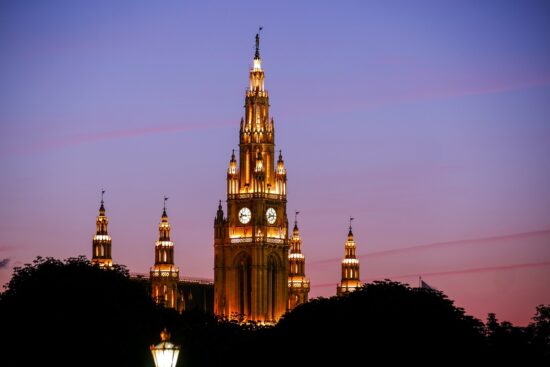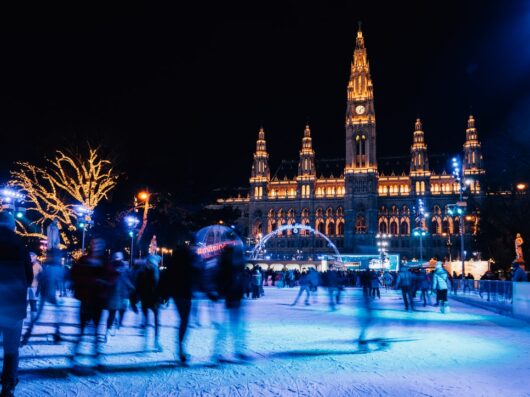The Rathaus
The small Rathauspark where the famous traditional Christian Market takes place every year, separates the Parliament from the most impressive Gothic structure in the city, the Rathaus (Town Hall). Although its lines & overall shape relate to the Medieval Gothic cathedrals the building was erected during the second half of the 19th century, a time of constructional orgasm throughout the Ringstrasse’s newly acquired free spaces.


The architecture of the buildings in Ringstrasse is dominated by historicism, the Greek-Roman revival style of architecture that prevailed after the 1850s in Europe and the US. Friedrich Schmidt who had earlier worked in the construction of the Cologne Cathedral (another Gothic masterpiece), designed & constructed the Rathaus between 1872 & 1883 in a similar motif. The architect succeeded in his task to construct a building that conveys a feeling of historicity, a sense that it is part of Vienna’s cityscape for centuries.


The resemblance of the hundred meters tall tower with a cathedral bell tower is striking. Inside the stunning Council Chamber with its grandiose chandelier, the unmatched 71 meters long & 18.5 meters high Festival Hall, the 2.804 m² (one of the biggest in Europe) Arkadenhof inner courtyard that reminds us of the Doge’s Palace in Venice, the impressive Senate Chamber, the Grand Staircases & the Coat of Arms Hall will make it difficult for you to imagine that this is the actual “office” of the city’s administration with more than 2000 people working daily in its premises. More



